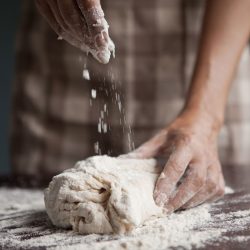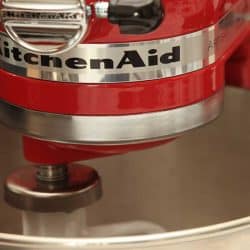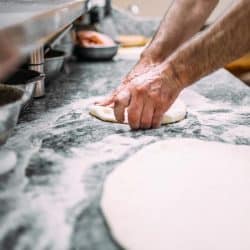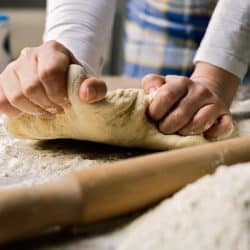It's no secret that baking bread can be tricky. Some will get it right straight away. And others will struggle to find the right consistency. One problem you might run into is dough that is too hard and tough to handle. If you want tips to fix and avoid this, let's go over the details.
There are two instances where you'll find the dough turning too hard. In the first situation, you might've added too much flour. Adding less flour and more water would be the solution. If your dough was in the fridge, it might've dried out. You can cut off the dry portion and continue using the dough.
You can always try to turn the situation around in baking. If the dough is too hard, the solution can be as simple as adding more water. However, how much you add matters. Adding too much at a time can turn the situation worse. If you'd like to learn more about salvaging dough that's too hard, keep reading.
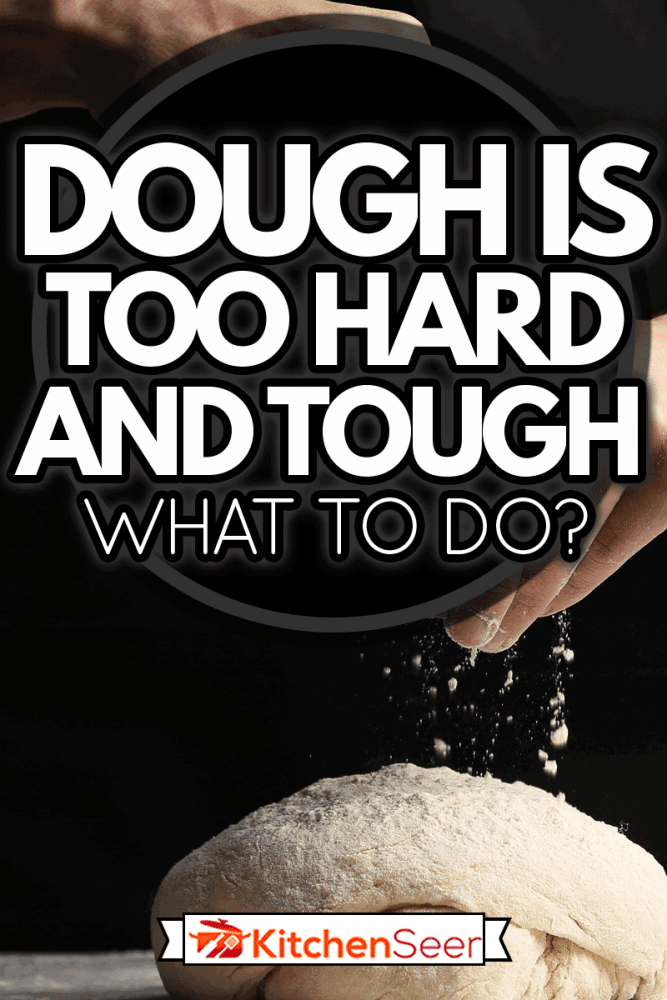
Why Does Dough Turn Hard And Tough?
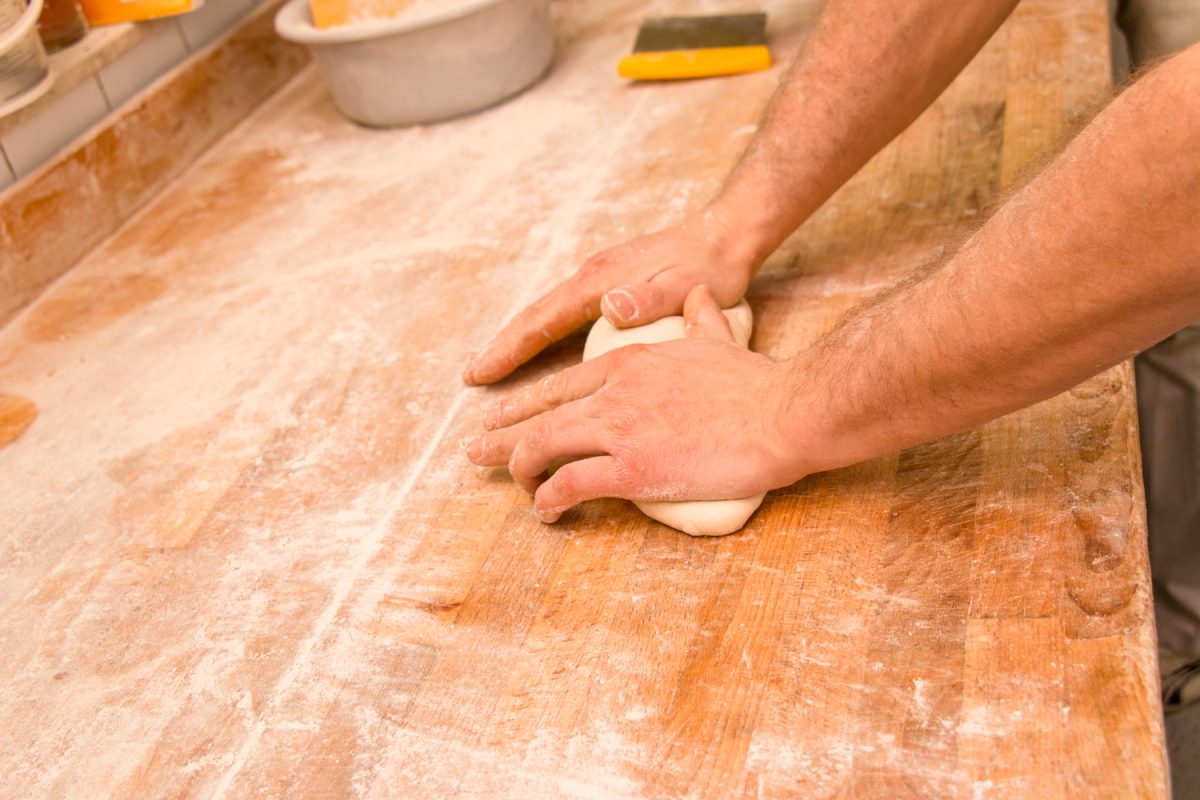
Making bread dough is a delicate process. There are many steps you have to go through. Even seasoned bakers can easily mess up throughout the process. Luckily, it isn't that easy to mess up entirely. You can easily bring life back to your dough. But, you'll have to find out where the error lies.
Preparing The Dough
The first instance where anyone can mess up is during preparation. The concept sounds simple enough. It depends on the recipe. Still, mixing yeast, flour, and water is usually involved.
The mixing part is where people can mess up. It's easy to see where things can go wrong. If you're following a recipe, it will typically instruct you to add water incrementally to flour.
At that moment, you might be hesitant to add enough water. As a result, you can produce tough and dry dough. When you handle it, the dough falls apart easily. In addition, when you poke it, the top layer cracks. If that describes your situation, you can fix the problem by adding more water.
Fixing The Problem
The solution to your problem is to add more water to the dough. Of course, you'll want to add it conservatively. If you add too much water, it will create the opposite problem. The dough will be too wet and sticky.
Thus, it's better to play it safe and work your way through it. Add a teaspoon of water and knead the dough. Pay attention to how the dough reacts.
Of course, the results you want will vary. Some doughs for bread will be stickier than others. If you want accurate results, you'll need to look for the right consistency for the recipe you're working with.
Generally, a good dough base will be slightly tacky. Additionally, it won't leave bits behind. So, as you add teaspoons of water, look out for a smooth, round dough ball.
Here's a YouTube video demonstrating how to revive your dough:
Improper Storage
We're not always lucky to have the time to prepare food right away. Thus, we put things in the fridge and use them when it's time. However, the way you store the dough matters.
The dough is sensitive. And, the fridge isn't a friendly environment for it. It tends to dehydrate uncovered foods. So, that's another mistake you could have made. The typical recommendation is to put a wet towel over the top of a container holding the dough. But a damp towel isn't enough protection for the dough.
Once the towel dries out, the dough will too. However, the mistake won't mess up the process too much. In most cases, the surface takes the brunt of the damage. Still, the fridge can also ruin the entire dough.
How Can You Make Your Dough Less Tough Out Of The Fridge?
There are several ways you can approach the situation. If the surface of the dough is dry, you can make it moist again. All it takes is a bit of water. However, you'll want to start by taking the dough out of the container. Check the entire dough ball. If nothing else is dry, you can make it stretchy again.
Start by getting your hands wet. Then, massage the surface of the dough. After a few minutes, the surface should begin to become more malleable.
Here's a YouTube video demonstrating it:
What To Do If The Dough Is Too Tough
Sometimes the surface is too tough to save. So, massaging the surface with water might not work. Instead, it would be easier to cut off the dry part. It's less dough to work with, but at least some of it can be salvaged. If the entire dough ball is tough, you can try to solve it in two ways.
The easiest solution is to throw it away and start over. However, you might not want the dough to go to waste. So, the second approach would be to let it sit out for a few minutes.
It might need some time to get up to room temperature. If the dough is still too tough and dry, you will need to add water to it. So, take your bowl and add tiny amounts of water. Work the dough in the container until it's a soft and stretchy consistency.
If you need visual guidance, here's a YouTube video to help:
Over-Kneading The Dough
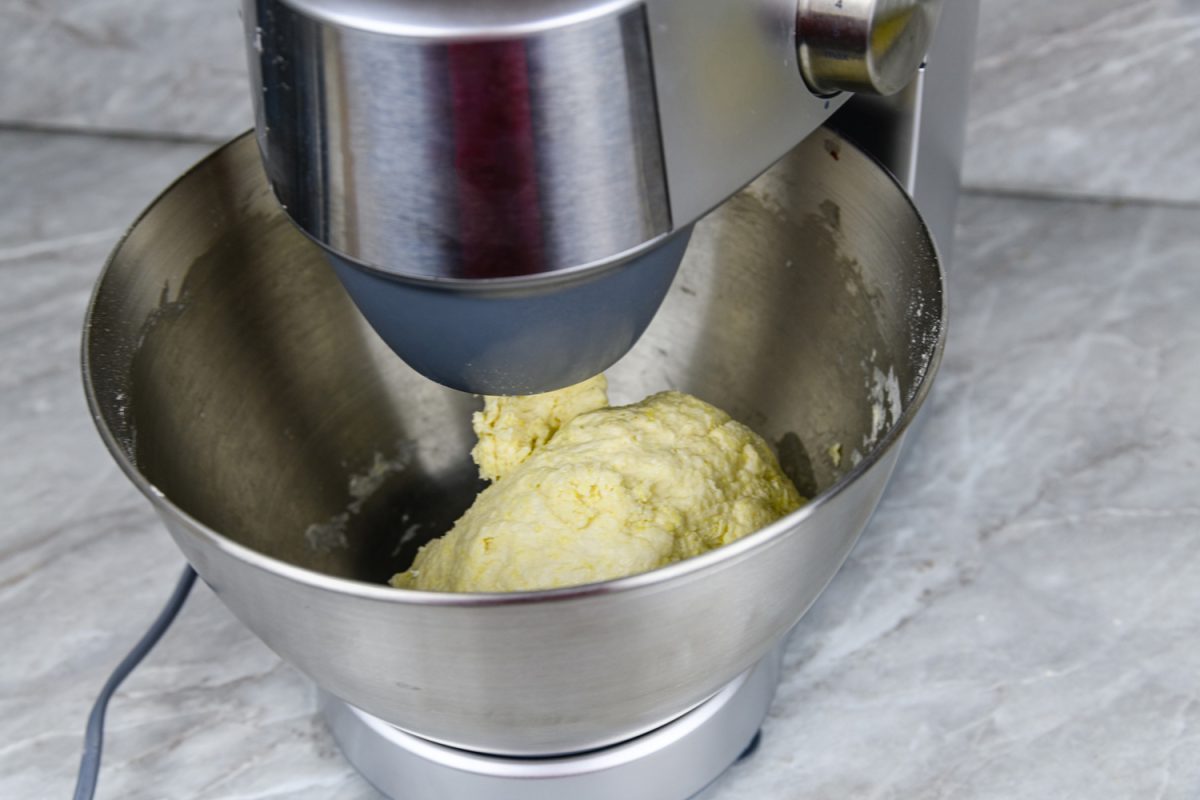
It's also possible that you got the right amount of flour and water. But, the dough still came out hard. What's the matter?
Kneading is a process that helps stretch and develop the gluten strands in the dough. You knead the dough as you mix the flour and water. However, kneading the dough too much can make it tense.
It's not common for it to happen by hand. You can over-knead the dough if you've put it in a mixer. When the dough is over-kneaded, the gluten strands become too tight.
As a result, it becomes tougher to handle. In addition, the dough loses its ability to stretch. So, it tears easily. Unfortunately, there's not much you can do to fix this problem.
Fixing Over-Kneaded Dough
If you're lucky, you probably caught the signs of over-kneaded dough early. Therefore, you might have a chance to save it from becoming flat and chewy.
The solution to your problem would involve waiting. More specifically, let the dough rise for a little longer. This way, you give the gluten more time to relax.
However, if the dough is too over-kneaded, there's no way to fix it. Accordingly, you'll have to settle for flat and chewy bread. Still, it's crucial to consider that mixers can ruin the dough. Check the dough every few minutes while it's in the mixer. This way, you can avoid over-kneading it in the future.
Why Does My Bread Come Out Hard?
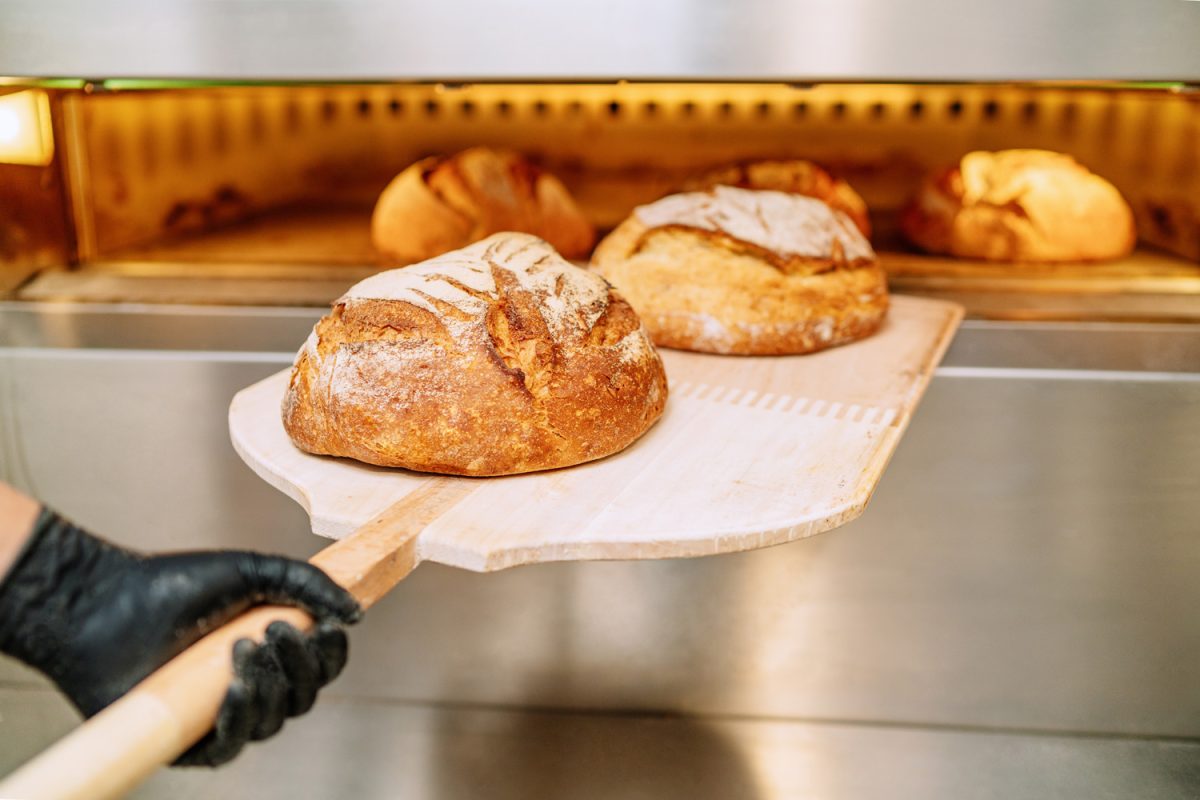
Another aspect of baking is considering the result. You can get the right consistency while you prepare the dough. But, somehow, the bread comes out too hard.
There are several reasons why this can happen. One of them involves the type of flour you use. Before making the dough, you'll want to research the specific bread you're preparing.
This way, you can utilize the correct flour for the situation. For example, cake flour isn't good for bread because it lacks gluten. So, if you make bread with cake flour, it will come out with a soft, fluffy texture.
If you're following a recipe, the flour is usually interchangeable. Generally, the flour shouldn't matter if the protein content is nearly the same.
It's a matter of following guidelines and mastering concepts. Still, if you decide to deviate from the recipe, you'll have to make adjustments. Otherwise, it's impossible to get the same results.
Why Does My Bread Come Out Dense?
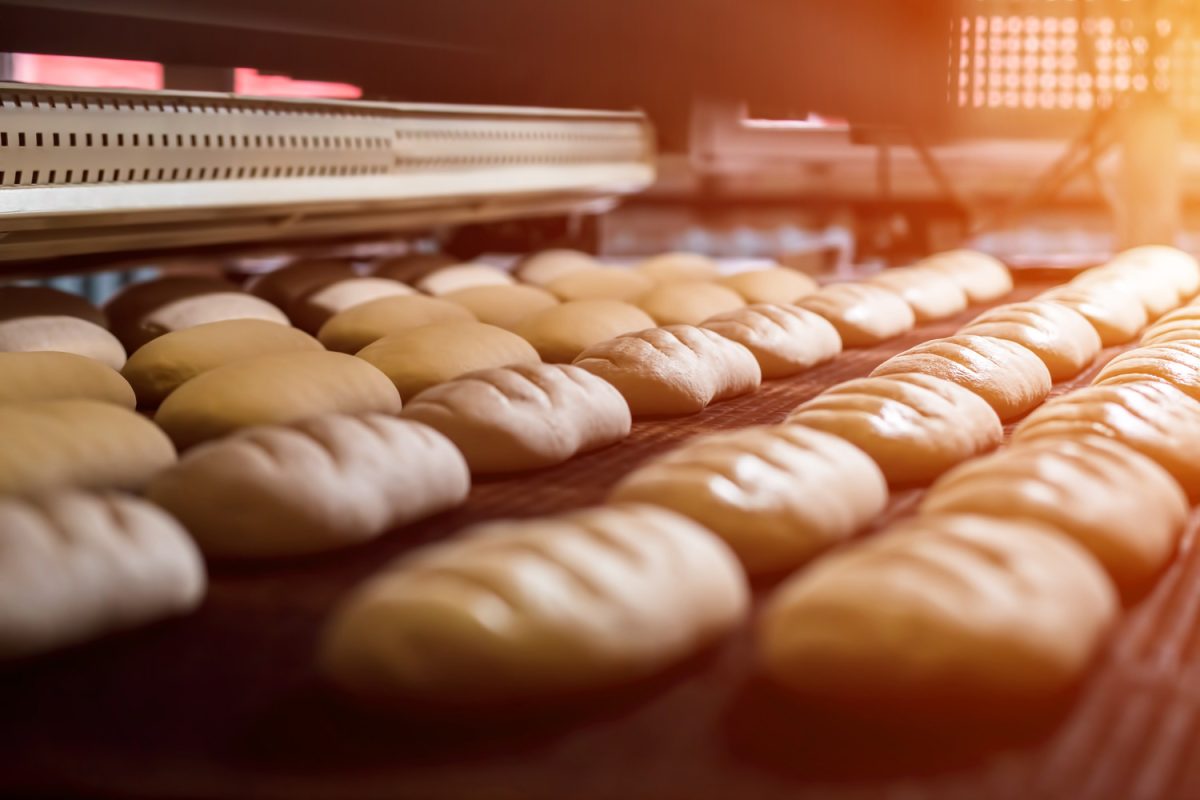
Dense bread is an issue that's simple to solve. It involves the type of flour you use. As mentioned, the flour shouldn't matter if you use one within the correct protein range. The more protein it has, the more likely the dough will hold its structure.
When it's too low, the dough will tend to fall flat. As a result, you get dense, chewy bread. It depends on what you are preparing. However, the best flours for bread usually have about 11% protein content.
All-purpose flour falls in that category. It's good enough to make certain types of bread. However, if you want it to be more light and airy, a 13% protein level is better. Some go far enough to use dough with a 14% protein content.
If you're new to baking, it's better to stick with all-purpose flour. Once you master the concepts, you can venture into the protein-rich flours. Regardless, it's up to you to decide what you want to use.
In Closing

Baking is not rocket science. However, it's easy to mess up. There are many steps involved in preparing the dough. Hopefully, you can identify where it all went wrong. We hope you found the information above helpful.
Before you go, do you have other dough concerns? Are you leaving it in the fridge again? We have information on how long it can last by type! To learn more, check out:
How Long Does Dough Last In The Fridge?
Are you making pizza? If the dough came out too sticky, check out:
Pizza Dough Too Sticky - What To Do?

![Baker man hands breadmaking kneading bread dough, How Long To Knead Bread [By Hand And In A Mixer]](https://kitchenseer.com/wp-content/uploads/2021/03/Baker-man-hands-breadmaking-kneading-bread-dough-250x250.jpg)
